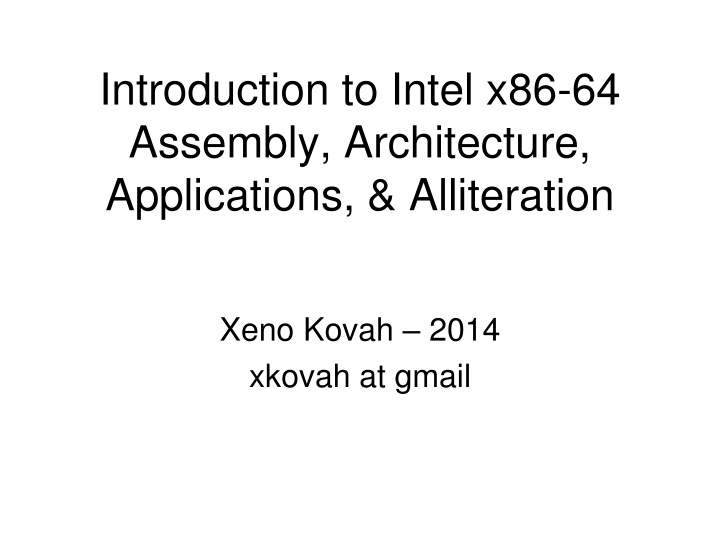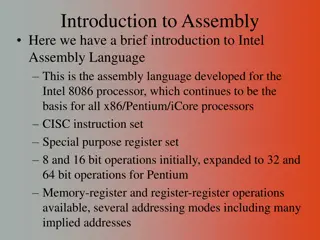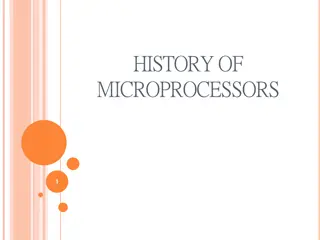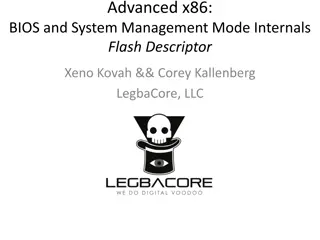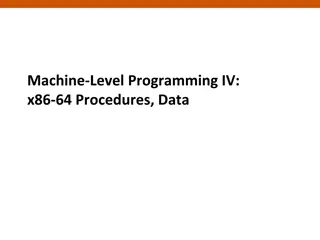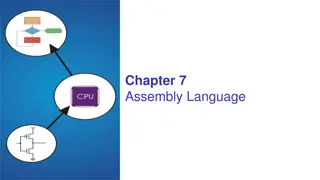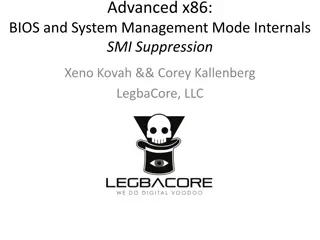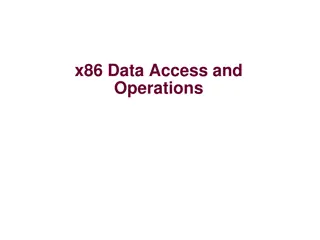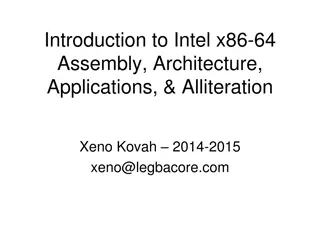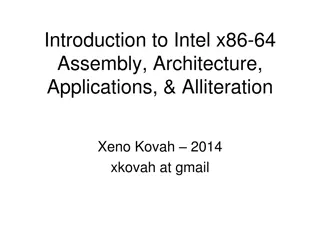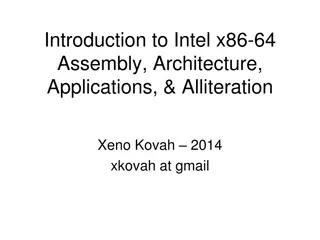Introduction to Intel x86-64 Assembly: Basics and Beyond
Dive into the world of Intel x86-64 Assembly with a focus on architecture, applications, and alliteration. Explore instructions, hardware registers, compiler usage, and more. Unravel the mysteries of memory mapping, debugging, malware detection, and user/kernel space separation. Enhance your skills and contribute to the r0x0r skill tree.
Download Presentation

Please find below an Image/Link to download the presentation.
The content on the website is provided AS IS for your information and personal use only. It may not be sold, licensed, or shared on other websites without obtaining consent from the author.If you encounter any issues during the download, it is possible that the publisher has removed the file from their server.
You are allowed to download the files provided on this website for personal or commercial use, subject to the condition that they are used lawfully. All files are the property of their respective owners.
The content on the website is provided AS IS for your information and personal use only. It may not be sold, licensed, or shared on other websites without obtaining consent from the author.
E N D
Presentation Transcript
Introduction to Intel x86-64 Assembly, Architecture, Applications, & Alliteration Xeno Kovah 2014 xkovah at gmail
All materials is licensed under a Creative Commons Share Alike license. http://creativecommons.org/licenses/by-sa/3.0/ Attribution condition: You must indicate that derivative work "Is derived from Xeno Kovah's 'Intro x86-64 class, available at http://OpenSecurityTraining.info/IntroX86-64.html
Wrap up - instructions Learned around 30 instructions and variations About half are just math or logic operations NOP PUSH/POP CALL/RET MOV/MOVZX/MOVSX/LEA ADD/SUB IMUL/DIV/IDIV JMP/Jcc (family) CMP/TEST AND/OR/XOR/NOT INC/DEC SHR/SHL/SAR/SAL REP STOS/REP MOVS 53
Wrap up Learned about the basic hardware registers and how they re used Learned about how the stack is used Saw how C code translates to assembly Learned basic usage of compilers, disassemblers, and debuggers so that assembly can easily be explored Learned about Intel vs AT&T asm syntax Learned how to RTFM Learned that classes that claim to teach you hacking/RE in a couple days are selling the illusion of understanding. An illusion which soon fades.
The shape of things to come How does a system map a limited amount of physical memory to a seemingly unlimited amount of virtual memory? How does debugging actually work? How can malware detect your debugger and alter its behavior? How is user space actually separated from kernel space ? I ve heard there s rings , but where are these fabled rings actually at? What if I want to talk to hardware beyond the CPU? Intermediate x86 has it all! http://opensecuritytraining.info/IntermediateX86.html
Keep skilling up! Climb the r0x0r skill tree! Take this class and teach others! Contribute a new class in your expertise area!
Use these skills towards the hardest game in town: defense! Learn what trusted computing technologies can (and can t) offer!
